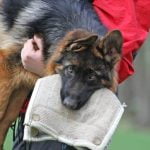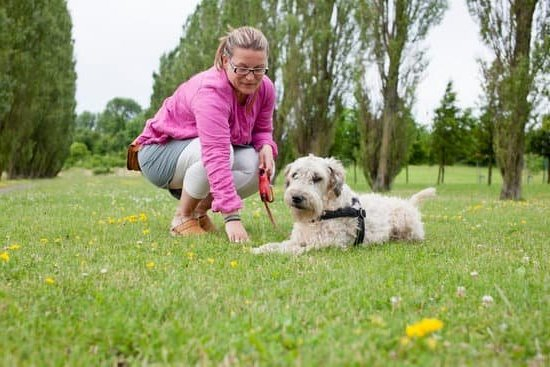Have you ever wondered, “Do police take dogs to train?” Well, the answer is yes.
Police dogs play a crucial role in law enforcement, helping officers with various tasks such as tracking suspects, detecting drugs or explosives, and apprehending criminals. This article will explore the selection process of police dogs, their training methods, specialized training for specific tasks, the bond between officer and dog, equipment and gear used in training, real-life examples of police dogs in action, and the future of canine law enforcement technology.
Police dogs are carefully selected based on their temperament, drive, and physical abilities. Once chosen, they undergo rigorous training to develop obedience and learn specific tasks that are essential for their role in law enforcement. Obedience training is a crucial aspect of their development as it ensures that they follow commands from their handlers without hesitation.
In addition to basic obedience training, police dogs also undergo specialized training for specific tasks like tracking suspects and locating evidence. The close bond between the officer and dog is vital for effective communication and cooperation during operations. Moreover, this section will delve into the equipment and gear used in police dog training and share success stories of these remarkable canines in action. Lastly, we will discuss future advancements in canine law enforcement technology.
The Selection Process
Police dogs are carefully chosen and trained for the specific needs of law enforcement. When it comes to selecting police dogs, certain breeds are favored for their intelligence, agility, and work ethic. German Shepherds, Belgian Malinois, and Labrador Retrievers are among the most commonly used breeds due to their natural abilities and traits that make them suitable for police work.
The training process for police dogs is rigorous and starts at a young age. These dogs undergo basic obedience training to ensure they can follow commands from their handlers. The next step involves specialized training in areas such as tracking, detection, and apprehension. This involves teaching the dogs to use their natural senses to locate contraband or suspects, as well as how to safely subdue a suspect when necessary.
In addition to traditional obedience and specialized training, police dogs also receive socialization training to become acclimated to various environments and situations they may encounter in the line of duty. This is crucial in ensuring that the dogs remain focused on their tasks regardless of distractions. The selection and training process is fundamental in preparing these canine officers for a successful career in law enforcement.
| Police Dog Breeds | Selection Criteria |
|---|---|
| German Shepherds | Intelligence, Work Ethic |
| Belgian Malinois | Agility, Drive |
| Labrador Retrievers | Scent Detection Abilities |
The Importance of Obedience Training
Obedience training is a crucial part of preparing police dogs for their duties in law enforcement. This training teaches dogs to follow commands from their handlers promptly and reliably. It is essential for ensuring that the dog can be controlled in various situations, especially when working in high-pressure and potentially dangerous environments. Obedience training also helps to establish a strong bond between the dog and its handler, as well as instilling discipline and respect for authority.
During obedience training, police dogs learn basic commands such as sit, stay, heel, come, and down. They are taught to respond quickly and accurately to these commands without hesitation. Consistent and repetitive training is necessary to reinforce these behaviors until they become automatic responses for the dog. Positive reinforcement methods are commonly used during obedience training, where dogs are rewarded with treats or praise when they successfully execute a command.
In addition to following basic commands, police dogs are also trained to ignore distractions while on duty. This means that even in chaotic or noisy environments, the dog must remain focused on its handler’s instructions. Obedience training plays a significant role in shaping the behavior and abilities of police dogs, ultimately contributing to their effectiveness in carrying out law enforcement tasks.
| Obedience Training Information | Data |
|---|---|
| Basic Commands Taught | Sit, Stay, Heel, Come, Down |
| Training Methods | Positive Reinforcement |
| Goal of Training | To establish discipline and respect for authority; To ensure prompt and reliable response to commands; To teach dogs to ignore distractions |
Specialized Training
Police dogs undergo specialized training to perform specific tasks that are crucial in law enforcement. This training is essential to ensure that the dogs can effectively assist the police in various operations. Here are some of the specific tasks for which police dogs receive specialized training:
- Tracking: One of the primary roles of a police dog is tracking suspects or missing persons. Dogs are trained to follow scent trails over different terrains and locate individuals based on their unique scent.
- Detection: Police dogs are trained to detect narcotics, explosives, firearms, and other contraband. The keen sense of smell possessed by dogs makes them invaluable in searching for illegal substances in vehicles, buildings, and open areas.
- Apprehension: When a suspect attempts to flee or poses a threat, police dogs can be used to apprehend and restrain individuals without causing serious harm. They are trained to use controlled force to subdue suspects until officers can safely take control of the situation.
Specialized training for police dogs involves rigorous exercises, simulations, and real-life scenarios designed to hone their skills for these specific tasks. Through consistent practice and reinforcement, these highly trained animals become proficient in executing their duties with precision and reliability.
Ultimately, the success of specialized training for police dogs depends on the dedication of experienced trainers who understand the unique capabilities and instincts of these working animals. Additionally, ongoing education and research contribute to advancements in training methods and techniques that enhance the effectiveness of police dogs in fulfilling their vital roles in law enforcement.
The Bond Between Officer and Dog
The bond between a police dog and its handler is crucial to their effectiveness in law enforcement. Police dogs are often chosen based on their temperament, drive, and ability to work well with a handler. The selection process includes observing how the dog interacts with potential handlers and assessing their compatibility. Once paired, the handler and dog undergo extensive training together to build trust and communication.
This partnership goes beyond just working together on the field. Handlers spend a significant amount of time with their dogs, both on duty and off duty. They develop a strong bond through daily routines, training exercises, and even downtime activities. This bond is essential for effective teamwork during high-stress situations where quick thinking and seamless communication are vital.
Additionally, the relationship between a police dog and its handler extends to the care and well-being of the dog. Handlers are responsible for ensuring that their canine partners receive proper nutrition, medical care, exercise, and mental stimulation.
The strong bond between them allows handlers to understand their dogs’ needs and provide the best possible care for them both on and off duty. The connection between a police dog and its handler is built on trust, respect, and mutual reliance, making it an integral part of successful law enforcement operations.
Equipment and Gear
Police dog training requires the use of various tools and accessories to ensure that these K-9 officers receive the necessary training to fulfill their duties effectively. Some of the essential equipment used in police dog training includes:
– **Leashes and Collars:** Proper leashes and collars are vital for controlling and guiding police dogs during training exercises. Typically, leather or nylon material is used for durability and strength.
– **Bite Sleeves and Bite Suits:** These are specialized protective gear worn by trainers to train police dogs in controlled biting and holding techniques. It allows the dogs to practice their apprehension skills without causing harm to the trainers.
– **Harnesses:** Harnesses are used for certain tasks such as tracking and searching. They provide a comfortable and secure way for the dog to be guided by their handler.
– **Training Scents:** To teach detection skills, specific scents such as narcotics, explosives, or even human scent are used during training exercises.
Additionally, electronic collars, agility equipment, reward toys, and grooming supplies also play a crucial role in police dog training. The proper use of these tools ensures that police dogs can effectively carry out their duties with precision and discipline.
Considering the highly specialized nature of police work, it is essential for law enforcement agencies to invest in high-quality equipment and gear for their canine units. This not only ensures the safety and effectiveness of the K-9 officers but also contributes to the overall success of law enforcement operations involving these skilled animals.
Real-Life Examples
Drug Detection
Police dogs have been instrumental in detecting illegal drugs and apprehending drug dealers. In one well-known case, a police dog named Max helped uncover a large shipment of narcotics hidden inside a vehicle at a border crossing. Max’s keen sense of smell and thorough training allowed him to discover the concealed drugs, leading to the arrest of the individuals involved.
Search and Rescue Operations
In natural disasters or missing person cases, police dogs are often deployed for search and rescue operations. For instance, during a recent avalanche, a specially trained police dog named Rex located several victims buried under the snow within minutes. His ability to locate people trapped in difficult terrain saved crucial time and ultimately saved lives.
Criminal Apprehension
Another remarkable example is the story of K9 Officer Luna, who successfully tracked down and apprehended a dangerous criminal who had evaded capture for months. Despite evasive tactics used by the suspect, Luna’s specialized tracking skills led law enforcement officers directly to the individual’s location. The successful arrest was attributed to Luna’s intensive training and unwavering dedication to her duty.
These real-life examples underscore the vital role that police dogs play in law enforcement operations. Whether it be through drug detection, search and rescue efforts, or criminal apprehension, these success stories highlight the invaluable contribution of highly trained canine units in keeping communities safe.
The Future of Police Dog Training
In conclusion, the future of police dog training holds promising innovations and advancements in canine law enforcement technology. As technology continues to evolve, so does the training methods for police dogs. From virtual reality simulations to advanced scent detection equipment, these new tools are enhancing the abilities of K9 units in law enforcement agencies.
One area of innovation in police dog training is the use of wearable technology for K9s. With the development of GPS tracking devices and biometric sensors, handlers are able to monitor their dogs’ vital signs and location during operations. This not only ensures the safety of the dog but also improves efficiency in tracking and apprehension tasks.
Furthermore, advancements in behavioral conditioning techniques and cognitive training methods are being explored to further improve the capabilities and performance of police dogs. By understanding canine behavior at a deeper level, trainers can tailor their programs to enhance obedience, detection skills, and overall effectiveness in various law enforcement tasks. As these innovations continue to be developed and implemented, the future looks bright for police dog training, ensuring that K9 units remain an indispensable asset in law enforcement efforts.
Frequently Asked Questions
What Do You Call Someone Who Trains Dogs for the Police?
Someone who trains dogs for the police is typically called a K9 handler or a K9 trainer. These individuals are responsible for teaching, conditioning, and preparing dogs to work in law enforcement, whether it’s for tasks like detecting drugs, explosives, or search and rescue operations.
What Method Are Police Dogs Trained With?
Police dogs are typically trained using positive reinforcement methods that reward desired behaviors with treats, toys, or praise. This helps create a strong bond between the dog and their handler and encourages the dog to perform their duties effectively.
Can All Dogs Be Police Dogs?
Not all dogs can become police dogs as it requires specific qualities such as good temperament, intelligence, agility, and the ability to remain focused in various environments. Breeds commonly used as police dogs include German Shepherds, Belgian Malinois, Dutch Shepherds, and Labrador Retrievers due to their physical abilities and trainability.
However, every dog is an individual and some may possess the right traits to work in this capacity even if they are not of these breeds.

Welcome to the blog! I am a professional dog trainer and have been working with dogs for many years. In this blog, I will be discussing various topics related to dog training, including tips, tricks, and advice. I hope you find this information helpful and informative. Thanks for reading!





